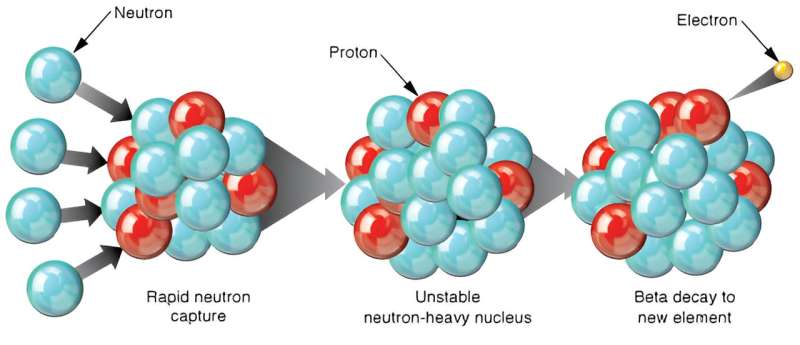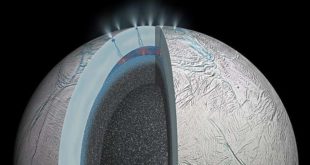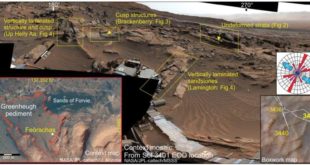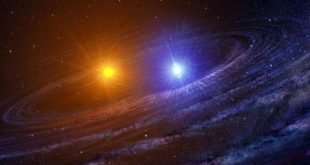
The first stars of the universe were monstrous beasts. Comprised only of hydrogen and helium, they could be 300 times more massive than the sun. Within them, the first of the heavier elements were formed, then cast off into the cosmos at the end of their short lives. They were the seeds of all the stars and planets we see today. A new study published in Science suggests these ancient progenitors created more than just the natural elements.
Except for hydrogen, helium, and a few traces of other light elements, all of the atoms we see around us were created through astrophysical processes, such as supernovae, collisions of neutron stars, and high-energy particle collisions. Together they created heavier elements up to Uranium-238, which is the heaviest naturally occurring element. Uranium is formed in supernova and neutron star collisions through what is known as the r-process, where neutrons are rapidly captured by atomic nuclei to become a heavier element. The r-process is complex, and there is still much we don’t understand about just how it occurs, or what its upper mass-limit might be. This new study, however, suggests that the r-process in the very first stars could have produced much heavier elements with atomic masses greater than 260.
The team looked at 42 stars in the Milky Way for which the elemental composition is well understood. Rather than simply looking for the presence of heavier elements, they looked at the relative abundances of elements across all the stars. They found that the abundance of some elements such as silver and rhodium doesn’t agree with the predicted abundance from known r-process nucleosynthesis. The data suggests that these elements are the decay remnants from much heavier nuclei of more than 260 atomic mass units.
In addition to the r-process of rapid neutron capture, there are two other ways to create heavy atomic nuclei: the p-process where neutron-rich nuclei capture protons, and the s-process where a seed nucleus can capture a neutron. But neither of these can create a rapid build-up in mass necessary for elements beyond uranium. And it’s only in the hypermassive first-generation stars that r-process nucleosynthesis could have generated such elements.
Thus, the study suggests that the r-process could create elements well beyond uranium, and likely did so within the first stars of the universe. Unless there is an island of stability for some of these ultra-heavy elements, they will have long since decayed into the natural elements we see today. But the fact that they once existed will help scientists better understand the r-process and its limits.
More information:
Ian U. Roederer et al, Element abundance patterns in stars indicate fission of nuclei heavier than uranium, Science (2023). DOI: 10.1126/science.adf1341. On arXiv: DOI: 10.48550/arxiv.2312.06844
Provided by
Universe Today
Citation:
Ancient stars could make elements with more than 260 protons (2023, December 23)
retrieved 23 December 2023
from
This document is subject to copyright. Apart from any fair dealing for the purpose of private study or research, no
part may be reproduced without the written permission. The content is provided for information purposes only.
 Innovation Discoveries Latest Scientific Discoveries in Innovation
Innovation Discoveries Latest Scientific Discoveries in Innovation



